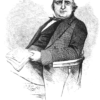
Janice Schroeder, “The Publishing History of Henry Mayhew’s London Labour and the London Poor”
Versions of Henry Mayhew’s massive social survey London Labour and the London Poor appeared in several publishing formats, including newspaper column, weekly serial, live stage show, and bound volume. This article traces the republication and remediation of London Labour alongside Mayhew’s repackaging of his interviews with London “street-folk” from 1849 onwards. I offer a succinct, accessible account of the complex publishing history of the text, from print newspaper column to digital edition.
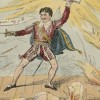
Jonathan Mulrooney, “Edmund Kean, Event”
This article considers Regency actor Edmund Kean’s presence as a figure in the theatrical news of the day, arguing that Kean’s acting style, coupled with changes in periodical print culture, reframed the relation between the British theatrical tradition, the actor’s stage performance, and audience reception. Emphasizing an “illegitimate” grammar of representation characterized by gesture, mobility, and emotional transition, Kean enacted new forms of subjectivity that aligned with emerging modes of theatrical criticism to shape readers’ concepts of their own private experience and their imagined engagement with public events.
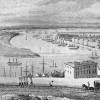
Carolyn W. de la L. Oulton, “‘Coquetting amid incredible landscapes’: Women on the River and the Railway”
The opening of the first direct railway line from London to the Kent coast in 1862 challenged traditional dichotomies between town and country, and contributed to a growing nostalgia associated with the river. Fin-de-siècle writers used the apparent opposition between rail and river, city and country, to ask new questions about the place of women in a rapidly changing world; the transition to a new century further strained the traditional dichotomy between feminised pastoral and masculinised industrial, a tension reflected in the problematic portrayal of rail and water in the work of E. Nesbit.
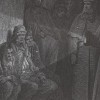
Heidi Kaufman, “1800-1900: Inside and Outside the Nineteenth-Century East End”
This essay examines depictions of one of the infamously well-known region of London called “The East End.” Scholarly and popular discussions of this part of the city have been dominated by texts emphasizing the East End’s seedy or sensational social and economic features. In particular, popular writing has focused on the history of poverty, crime, and resident “alien” or immigrant groups living in the East End. While such stereotypes were often loud in their sensationalism, and while they often overpowered competing narratives, this essay makes the case for reading them alongside a range of narratives about the East End, many of which were produced by residents of this part of London. In what follows, I consider a mix of insider and outsider lenses, of well-known and lesser-known voices that produced a varied range of depictions of the nineteenth-century East End. In the process, I argue that the East End ought not to be characterized as simply a site of crime and poverty. To understand this important part of London, we must instead examine a fuller range of voices emerging from disparate, often competing, perspectives. Through this mix, we can begin to register the East End’s economic, cultural and social diversity witnessed and described in discordant ways by visitors and residents alike.
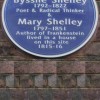
Tom Mole, “Romantic Memorials in the Victorian City: The Inauguration of the ‘Blue Plaque’ Scheme, 1868”
The ‘Blue Plaque’ scheme, which places memorial tablets on houses in London once occupied by distinguished people, was inaugurated in 1868, when the Royal Society of Arts placed the first plaque on the house in Holles Street (off Oxford Street) where Lord Byron was born. This was the first of many plaques: at least 33 were in place by the end of the century, with more planned. The distinctive blue circular design was adopted in 1901 and the scheme continues to operate today under the management of English Heritage. This essay argues that the scheme drew on key Romantic ideas about commemorative practice, expressed by William Godwin, William Wordsworth and Samuel Rogers, as well as memorialising Romantic authors. It suggests that the “Blue Plaques” should be read in the context of a number of pantheonic initiatives undertaken during the period of the Reform agitation, which aimed to promote cultural consensus in the present, by creating consensus about the noteworthy individuals of the past.

Brenda Assael, “On Dinners and Diners and Restaurant Culture in Late Nineteenth-Century London”
Lieutenant Colonel Nathaniel Newnham-Davis’s Dinners and Diners, published in 1899, provides a lively and valuable introduction to the restaurant in late nineteenth-century London, an aspect of Victorian metropolitan experience that has been largely overlooked by historians. This article uses Dinners and Diners to explore three aspects of Victorian metropolitan culture that are dramatized through public eating: first, the centrality of cosmopolitanism; second, the relationship between changing gender roles and new forms of urban sociability; and third, the significance of the theater and theatricality in late-Victorian culture.
